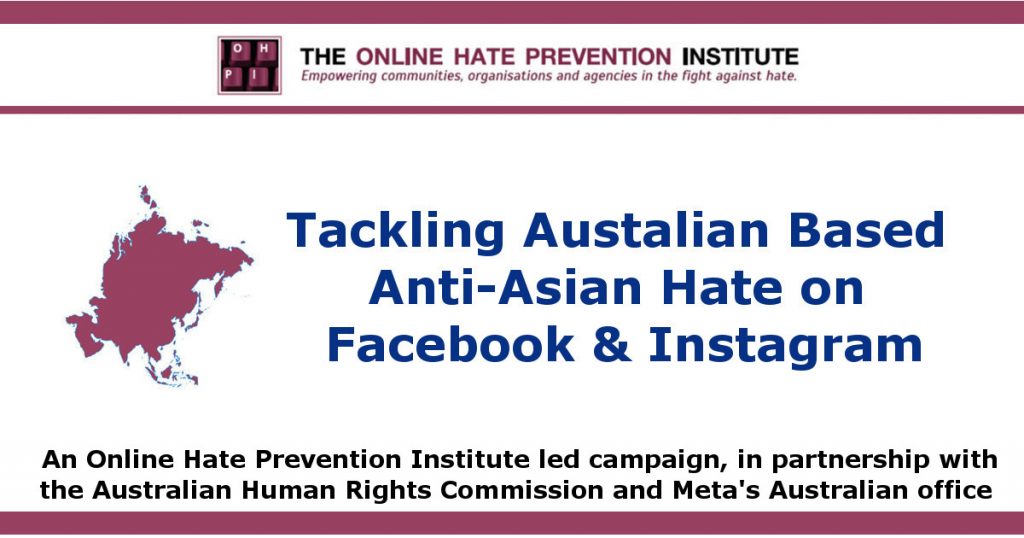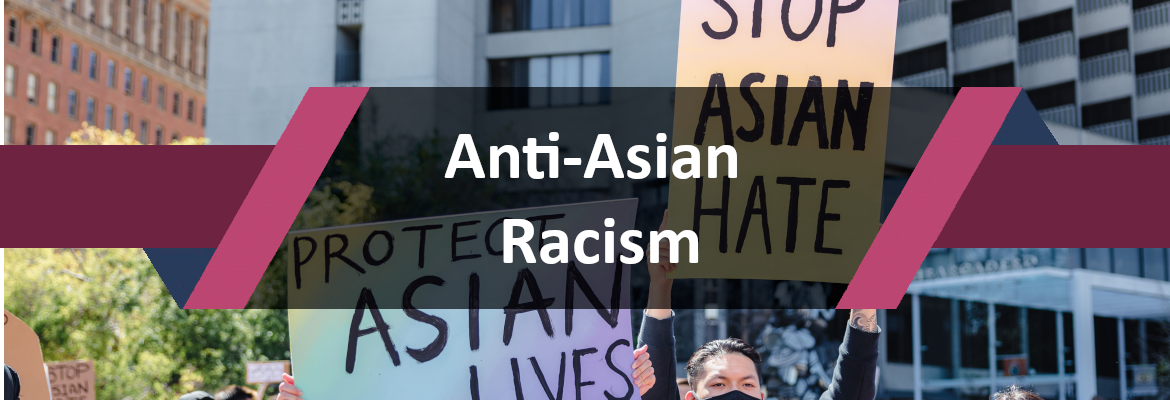Anti-Asian racism is a form of racism targeting people from Asia, those with Asian heritage, or those who are perceived to be Asian. It may be target Asians in general, or people connected to one or more countries in Asia.
As a form of racism, anti-Asian racism is unlawful in Australia under section 18C of the Racial Discrimination Act which defines racism to include discrimination on the basis of race, nationality and ethnic origin. Each Australian state has further laws prohibiting racism.
Index
Support our work

The Campaign Tackling Australian Based Anti-Asian Hate on Facebook & Instagram is a project documenting harmful content on these two social media platforms and working to enhance online safety by get this content removed. The project is led by the Online Hate Prevention Institute and conducted in partnership with Meta’s Australian office and the Race Discrimination Team at the Australian Human Rights Commission.
Welcome address from Australia’s Race Discrimination Commissioner, Chin Tan:
- Report online anti-Asian racism here
- Introduction to the classification schema for anti-Asian hate and methodology
- Examples and discussion of Anti-Asian Hate on Facebook
- Examples and discussion of Anti-Asian Hate on Instagram
- A sign-up form for community leaders to take part in a community consultation at the end of May has been sent to a range of Asian Australian community groups. If your group didn’t get an invite and would like to be considered for participation, please add your details here.
Community organisations can add the reporting tool to their own website with this code:
<iframe loading="lazy" src="https://fightagainsthate.org/hatemonitor/gateway?gateway_id=eeed9d81-50c0-4111-88f5-86a5193be883#!/reportHate" width="100%" height="800"><span data-mce-type="bookmark" style="display: inline-block; width: 0px; overflow: hidden; line-height: 0;" class="mce_SELRES_start"></span></iframe>If you do add the tool to your own website, please let us know.
History of anti-Asian Racism in Australia
Anti-Asian racism is not new in Australia. A lot could be written about the experience of migrants to Australia, and their Australian born descendants, from each country in Asia. Here is just a snapshot highlighting both the presence of Asian communities in Australia, which predates Australian federation, and the history of racism they have faced.
Chinese people began migrating to the colony of New South Wales in the 1840s. They worked in agriculture, taking over job previously done by convicts sent to the colony. The goldrushes in both Victoria and NSW led to further Chinese immigration in the 1850s and around 20% of the population in major Victorian goldmining towns were Chinese. There was significant racism on the goldfields. By 1880s there was a strong anti-Chinese sentiment in NSW. The Chinese Restriction and Regulation Act was passed by NSW in 1888. The White Australia Policy was largely a result of these anti-Chinese sentiments.
The Pauline Hanson and her political party One Nation formed on an anti-Asian policy platform in the 1990. In her speech to parliament in 1996, Hanson said, “I believe we are in danger of being swamped by Asians. … They have their own culture and religion, form ghettos and do not assimilate.” Her election, and policies she pushed, signalled a rival of anti-Asian racism in Australia. Analysis by the Australia Institute indicates that while the party’s public statements have been promoting anti-Muslim rhetoric in recent years, their anti-Asian position has not changed.
There are many stories of people from, or with heritage from, countries in Asia such as Korea, Vietnam, Malaysia, Singapore and others experiencing racism in Australia pre-COVID. During the pandemic, however, this racism grew and research showed that 40% of Asian Australian were experiencing racism. The Online Hate Prevention Institute’s COVID anti-hate campaign documented the presence of this racism online.

